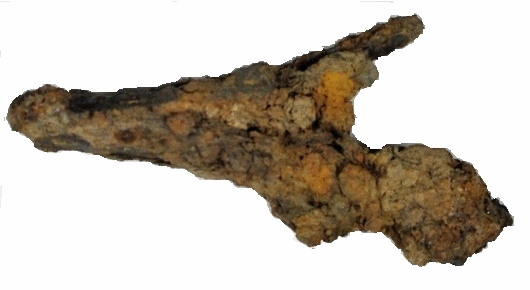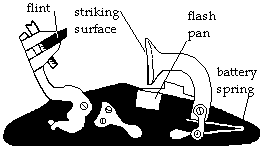Battery Spring

Conservator’s Notes
This iron object was identified during a survey of the collections at St. Mary’s City. The object was pulled for x-radiography due to its unique shape, but it was not identified at that time. The object was actually pulled because it was misidentified as a smoker’s companion. But lucky for us, because otherwise it may not have been given such a high priority and therefore it may not have been sent to the conservation laboratory for cleaning. During conservation cleaning using air-abrasion techniques, the corrosion on this object was slowly lifted away. The shape was so unique that the conservator decided to take many of the during treatment (cleaning) shots revealed in the photograph above.
As more of the corrosion was removed, it became clear that the object was not a smoker’s companion but it was interesting. The shape reminded us of a spring, but what kind? It was not until the object was shown to the curator that it was correctly identified. Military or armament items are not found in abundance at HSMC, and they are rarely found complete. There are many fragments of iron objects in the collections which are not able to be fully identified, but this important object opens up an entirely new category of object at the site.
![snaphaunce[2]](http://oldsite.hsmcdigshistory.org/wp-content/uploads/2013/09/snaphaunce2.jpg)
Curator’s Notes
This item is the battery spring from an early flint-ignition firearm known as a snaphaunce. The battery was the steel surface that the flint struck to produce the sparks which ignited the gunpowder. Snaphaunce locks were a vast improvement over the earlier match locks which used a smoldering “slow match” made of salt peter impregnated fiber. The snaphaunce developed in the last quarter of the 16th century in Europe. It incorporated the improvement of integrating the battery with the pan cover which held the priming powder. The tem “snaphaunce” means roughly “pecking hen” (from the Dutch) and derives from the action of the cock and the battery. The context of this discovery is a filled pit at the St. John’s site dating to the first half of the 17th century.



